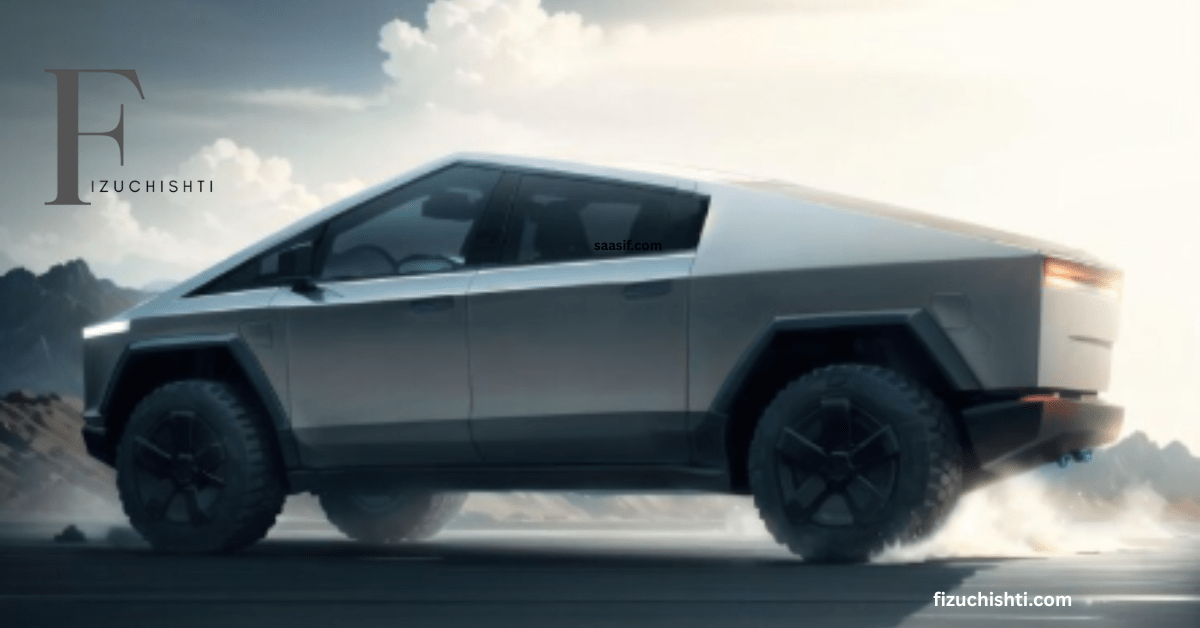Why Pentagon Big Tech Tesla Cybertruck is making Headlines
When Elon Musk first rolled out the Tesla Cybertruck, the world was surprised by its odd, angular design and bulletproof, stainless-steel structure. It’s looks and structure grab attention from everyone, but recently, a very different crowd the Pentagon has become interested in the Tesla Cybertruck. This marks the beginning of the Pentagon Big Tech Tesla Cybertruck in defense.
Yes, the same futuristic, stainless steel Cybertruck that turned heads in showrooms is now catching the eye of the U.S. military. Recent reports reveal that the U.S. Air Force has requested Cybertrucks for target practice to study their resilience. It’s a sign that the military is thinking about how electric vehicles (EVs) could fit into the future.
This surprising interest marks a growing collaboration between Big Tech and the military, one that could redefine the future of war, logistics, and defense technology.
Inside The Pentagon Big Tech Tesla Cybertruck
The Cybertruck is made of stainless steel and it’s battery-powered, which makes it stand out in a market flooded with traditional trucks. It’s tough, fast, silent, and capable of generating its own power. It has all the qualities that instantly raise questions in defense circles.
Officials say that testing the Cybertruck’s durability isn’t about putting it into service right away, but about understanding how new-generation vehicles could perform. The military wants to know if a vehicle this strong and efficient was ever used on the battlefield, by us or by someone else. How would it hold up?
That’s why two Pentagon big tech Tesla Cybertrucks are reportedly being sent to White Sands Missile Range in New Mexico for explosive and ballistic tests. It’s not simple to consume that EV become a target for the U.S. Air Force.
A Whole New Sector of Pentagon Big Tech Tesla Cybertruck In the Military.
The Pentagon’s curiosity about Tesla’s Cybertruck isn’t something simple. It’s part of a much bigger movement, strategy, and the collaboration of Big Tech and defense innovation.
Tech companies like Amazon, Google, Microsoft, and Tesla are already in the defense world. Amazon provides cloud services to the CIA, Microsoft’s HoloLens is being used for battlefield visualization, and now, Tesla is entering through its vehicles.
This is what experts call dual-use technology, big tech, the vehicle that was created for people, can also serve for military missions. The Cybertruck fits that category perfectly. It wasn’t designed as a tank, but its stainless-steel armor and energy efficiency make it best for specialized military roles.
For the Pentagon, such technologies are good because they’re ready to be used. Instead of spending years developing a new military vehicle, it can adapt what already works in the civilian world.
Why the Cybertruck Stands Out
The Cybertruck’s design has been mocked, memed, and celebrated, but underneath its looks and design lies some serious engineering that the military can’t ignore.
- Structure: regular vehicles use separate parts that are attached to a frame, but Tesla’s Cybertruck frame acts as both structure and armor. Cybertruck’s stainless steel exoskeleton is made of the same material SpaceX uses for rockets. This gives it resistance to dents, corrosion, and possibly even small-arms fire.
- Silent and Powerful: Being fully electric, it produces minimal noise and heat, perfect for military missions or patrols in sensitive areas.
- Self-charging Ability: Its large battery can charge tools or mobile devices, turning the vehicle into a power supplier.
- Low Maintenance: Fewer moving parts mean fewer breakdowns or disturbances, which means low maintenance, which is important for military operations.
These features might not be exciting for an everyday driver, but for the military, they’re gold. Imagine a vehicle that can operate quietly at night, recharge using solar panels, which will be a great advantage for the military.
Pentagon Procurement and Electric Vehicle Push
The Pentagon’s procurement of electric vehicles is part of a strategy to modernize the U.S. military fleet. EVs reduce fuel costs, maintenance costs, and improve energy management.
In early 2025, a State Department procurement mentioned a potential $400 million contract for “Armored Teslas”, later removed Tesla’s name quietly and revised it to “Armored Electric Vehicles.” The purpose remained the same: the government wants EVs that can be adapted for secure military use.
And Tesla isn’t the only one in the field of EVs. Other automakers and defense startups are developing armored electric vehicles that can handle rough and combat conditions. Still, few have the durability or battery range that the Cybertruck promises.
So even if Tesla never directly partners with the Pentagon procurement electric vehicle, its design is influencing how the military thinks about the next generation of transport.
The Battlefield Potential
The U.S. Air Force has acknowledged the Cybertruck’s durability. The Tesla Cybertruck can be used in the military for several reasons.
- Silent vehicle: Its quiet and silent movement for a longer range makes it ideal for surveillance or transport in operations.
- Supplies transportation: Cybertruck can help in delivering food, supplies, and first aid to areas after natural disasters.
Using EVs in the battlefield isn’t simple. Charging infrastructure, battery, and electromagnetic shielding remain big challenges. But as battery tech improves, the gap between EVs and the military can be shrinked.
Tesla and the U.S. Military: Quiet Collaboration
While there’s no official Tesla-military partnership, the connections are building. Elon Musk’s other ventures, SpaceX and Starlink, are already playing major roles in defense communication and satellite. That gives Tesla a natural pathway into military collaboration.
Musk himself has said that Tesla’s innovations could support national defense, especially in energy storage and AI-based logistics. It could provide power grids for bases or disaster zones.
For now, Tesla maintains a cautious distance from direct military contracts to protect its brand image. But the Pentagon Big Tech Tesla Cybertruck means in the future we can see their collaboration.
Armored EVs and Big Tech Defence Contracts
Now, everyone is in the race to build armored electric vehicles. Governments worldwide are looking for ways to make military transport cleaner and smarter. The Pentagon sees this as part of a long-term sustainability plan, cutting fuel costs and modernizing fleets without sacrificing power or protection.
That’s why Big Tech defence contracts are expanding beyond drones. Electric mobility and cybersecurity are now important to national defense. Companies like Tesla, Rivian, and GM Defense are positioning themselves as key players in this race.
The Pentagon’s Big Tech Tesla Cybertruck job is to be ready for anything from natural disasters to wars. And for being ready, it involves studying every new technology that might give an advantage or pose a threat.
Challenges and Strategic Risks
The idea of turning a Cybertruck for civilian consumers into military tools raises serious concerns.
- Ethics: Should vehicles built for families and civilians be weaponized?
- Transparency: How transparent should Big Tech defence contracts be when civilian companies start supplying battlefield vehicles?
- Dependence: Relying on private companies for defense technology could make militaries vulnerable to political pressure.
- Cybersecurity: Electric vehicles bring new risks. These EV vehicles can be hacked, tracked, or disabled remotely.
These questions don’t have any answers now. But they’re forcing the military to rethink how technology and security interact in the world.
The Bigger Picture: Dual-Use Future
The story of the Pentagon Big Tech Tesla Cybertruck shows how the world is evolving. The U.S. military is adapting faster than ever, and most vehicles may no longer come from defense labs but from commercial startups.
The Cybertruck’s journey from a viral vehicle to military target practice shows how the gap between civilian and military tech is shrinking
As wars become more digital and energy-dependent, the next battlefield vehicles might not look like tanks, but will look like the Cybertruck.
Conclusion
For now, the Tesla Cybertruck remains a consumer product, a flashy, powerful vehicle. The Pentagon’s tests, Big Tech’s growing role in defense, and the rise of dual-use technology all point that the line between civilian and military is disappearing fast.
Whether or not it ever serves in combat, the Pentagon Big Tech Tesla Cybertruck has already done something remarkable: it’s forced the U.S.defense system to imagine what the next generation of battlefield vehicles might look like.
The future wars will not be powered by diesel, but by data, batteries, and Big Tech.
Frequently Asked Questions (FAQs)
1. Why is the Military interested in the Tesla Cybertruck?
Its stainless-steel, strong structure, and silent and quiet drive make it ideal for studying new military mobility technologies.
2. Have Tesla and the Military defense signed a contract yet??
No official contract exists, but the U.S. defense has listed armored electric vehicles in its procurement plans, showing its growing interest in future EVs.
3. What is dual-use technology?
An innovation that was made for civilian people, like EVs, drones, or satellites, that can also serve military purposes.
4. What are the Cybertruck’s battlefield advantages?
Tesla’s Cybertruck’s strong Durability, low noise, and power generation ability make it suitable for military missions.
5. What’s the US Air Force’s plan for the Cybertruck?
They’re testing two units for blast and ballistic impact to study how such vehicles might perform well in future conflicts.
6. Could the military use of Tesla Cybertruck raise concerns?
Yes, some experts raise practical points, like cost, long-term maintenance, and whether a consumer-grade electric truck can truly handle extreme battlefield conditions



